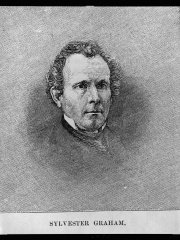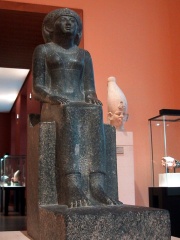RELIGIOUS FIGURE
Shalim-ahum
1950 BC - Today

 Shalim-ahum
Shalim-ahum
Shalim-ahum or Šalim-ahum was a ruler of the city-state of Assur in the 20th century BC. The Assyrian King List records his name as Šallim-aḫḫe, inscribed šal-lim-PABMEŠ, meaning, “keep the brothers safe”, and he appears among the six kings “whose eponyms are not found”, meaning that the length of his reign was unknown. He was described as the son of Puzur-Ashur I (dumu Puzu Assur) in his only known inscription. He is the earliest independent ruler to be attested in a contemporary inscription. Carved in curious archaic character mirror-writing in Old Assyrian on an alabaster block found during the German excavations at Assur under Walter Andrae, this sole exemplar of his contemporary inscriptions records that the god Ashur “requested of him” the construction of a temple and that he had “beer vats and storage area” built in the “temple area”. Read more on Wikipedia
His biography is available in 15 different languages on Wikipedia. Shalim-ahum is the 2,914th most popular religious figure (down from 2,783rd in 2024). (down from 4,195th in 2019)
Memorability Metrics
Page views of Shalim-ahum by language
Among RELIGIOUS FIGURES
Among religious figures, Shalim-ahum ranks 2,914 out of 3,187. Before him are David Beaton, Anthony Soter Fernandez, Sekhemrekhutawy Khabaw, Henry of Blois, Abu Muhammad al-Maqdisi, and Baldassare Reina. After him are Braulio Rodríguez Plaza, Sylvester Graham, Grigory Rodchenkov, Paul Grégoire, Zecharias Frankel, and Simona Brambilla.
Most Popular Religious Figures in Wikipedia
Go to all RankingsDavid Beaton
1494 - 1546
HPI: 54.15
Rank: 2,908
Anthony Soter Fernandez
1930 - 2020
HPI: 54.15
Rank: 2,909
Sekhemrekhutawy Khabaw
1800 BC - 1800 BC
HPI: 54.15
Rank: 2,910
Henry of Blois
1096 - 1171
HPI: 54.14
Rank: 2,911
Abu Muhammad al-Maqdisi
1959 - Present
HPI: 54.14
Rank: 2,912
Baldassare Reina
1970 - Present
HPI: 54.13
Rank: 2,913
Shalim-ahum
1950 BC - Present
HPI: 54.13
Rank: 2,914
Braulio Rodríguez Plaza
1944 - Present
HPI: 54.12
Rank: 2,915
Sylvester Graham
1794 - 1851
HPI: 54.11
Rank: 2,916
Grigory Rodchenkov
1958 - Present
HPI: 54.11
Rank: 2,917
Paul Grégoire
1911 - 1993
HPI: 54.11
Rank: 2,918
Zecharias Frankel
1801 - 1875
HPI: 54.10
Rank: 2,919
Simona Brambilla
1965 - Present
HPI: 54.07
Rank: 2,920
Contemporaries
Among people born in 1950 BC, Shalim-ahum ranks 4. Before him are Senusret III, Amenemhat II, and Khenemetneferhedjet I.
Others Born in 1950 BC
Go to all RankingsSenusret III
POLITICIAN
1950 BC - 1838 BC
HPI: 72.22
Rank: 1
Amenemhat II
POLITICIAN
1950 BC - 1885 BC
HPI: 69.49
Rank: 2
Khenemetneferhedjet I
COMPANION
1950 BC - 1900 BC
HPI: 57.26
Rank: 3
Shalim-ahum
RELIGIOUS FIGURE
1950 BC - Present
HPI: 54.13
Rank: 4















